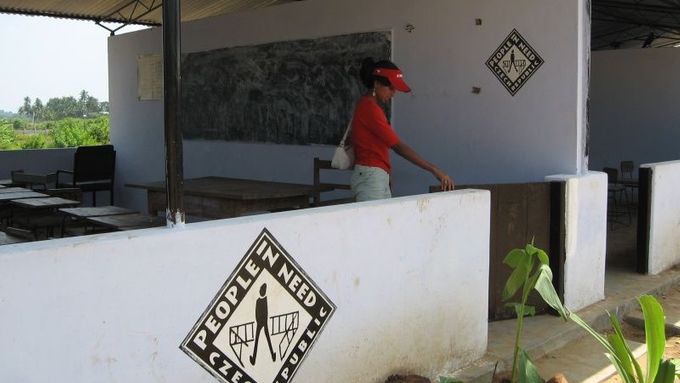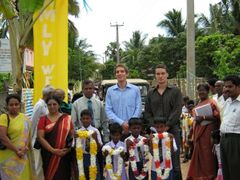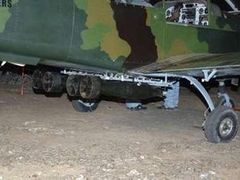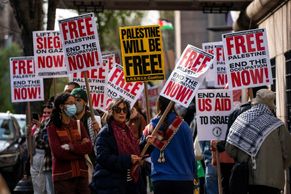Prague/Trincomalee - A day after the political wing chief of the Tamil Tiger rebels S.P.Thamilselvan was buried in the north of Sri Lanka last week, a small celebration was held in the municipality of Kalmunai in the eastern part of the island.
It was to mark the handover of a newly built primary school, the biggest in town, to the local authorities.
The facility which can accomodate 260 students from 6 to 12 years of age was built by the Czech humanitarian and development aid agency People in Need (PIN) who hired local workers for the project including the chief-architect.
The total cost of nearly 400 thousand US dollars was covered by donations from Czech citizens who responded to the PIN's SOS Sri Lanka public collection in the wake of the 2004 tsunami disaster.
Hampered by the conflict
No matter how disparate the two events mentioned in the first paragraph may seem, they did overlap, as PIN's head of mission in the civil war-torn island Matěj Novák told Aktuálně.cz in an-email interview.
"Because of the funeral-related hartal, or general strike, taking place in the district of Trincomalee (where PIN is Sri Lanka has been based since January 2005), our return from Kalmunai was delayed by a day. Otherwise we would be running the risk of inviting an attack from the strike-holders," Novák explained.
The whole school-building project, he admits, was delayed by about six months, one of the main reasons being the conflict between the Sinhalese-run central government and the minority Tamils who have been fighting for autonomy in the northern and eastern regions of the island since 1983.
In 2002, ceasefire brokered by Norway ended the fighting temporarily, ushering in four years of relative peace. However, since mid-2006 the conflict has fully reignited with the rebels from the Liberation Tigers of the Tamil Eelam (LTTE) launching their first-ever air raid in March this year.
Czech weapons make their mark
Several other bombing attacks by the Air Tigers followed, apparently using the Czech-manufactured Zlin Z-143, a lightweight airplanes normally used by flying ethusiasts, and now with a few simple changes turned into killing machines.
Sri Lankan government claims the aircraft were smuggled into the country in pieces concealed in shipping containers marked as aid for tsunami victims.
Czech planes now form the backbone of the rebels' air wing, but Matěj Novák says the Czech NGO he works for has faced no difficulties because of that.
"Let's not forget that the former Czechoslovakian government supplied their Sri Lankan counterparts heavily with weapons in the 1980s. Everybody knows that rocket-launchers, pistols, explosives and transporters used by the Sri Lankan army came from Czechoslovakia," says Novák.
"Whenever I tell somebody where I come from, they immediately bring out the topic of the weapon supplies. Football and supermodels still lag far behind, in this respect. Sometimes it even opens doors for us, when dealing with military officials for example."
"When I went to hospital last year in Colombo, one co-patient told me that if it were not for the Czech weapons, the conflict with the LTTE migh have taken a completely different turn, and he thanked me from the bottom of his heart for the weapons."
The end of war nowhere near
People in Need plan to continue providing help to the citizens of Ampara district where Kalmunai is located. Sri Lankan Muslims, still mostly referred to as Moors in a throwback to the colonial period, form a major ethnic group there, outnumbering both the Sinhalese who practice Buddhism and Tamils who are Hinduists.
Matěj Novák says it is paradoxically often the Muslim communities who fall victim to the Sinhalese-Tamil conflict in the island, recalling the flare-up of hostilities in the municipality of Muthur in Trincomalee district in August 2006, when some 30 thousand Muslims hade to flee from their homes.
PIN then participated in the relief operation, providing assistance to the displaced families who had to live in refugee camps for several months.
While stressing that he hopes to work more on the development than on the humanitarian aid side, Matěj Novák admits he is not too optimistic about the chances of the civil war ending any time soon in Sri Lanka.
"Even if the government succeeds in seizing all of the LTTE-controlled areas, which is their stated goal, the conflict will continue in the form of a guerilla war in the jungle and terrorist attacks," he says.












